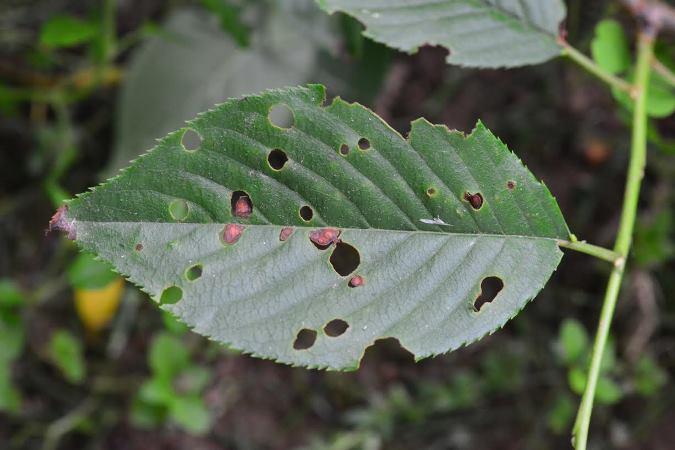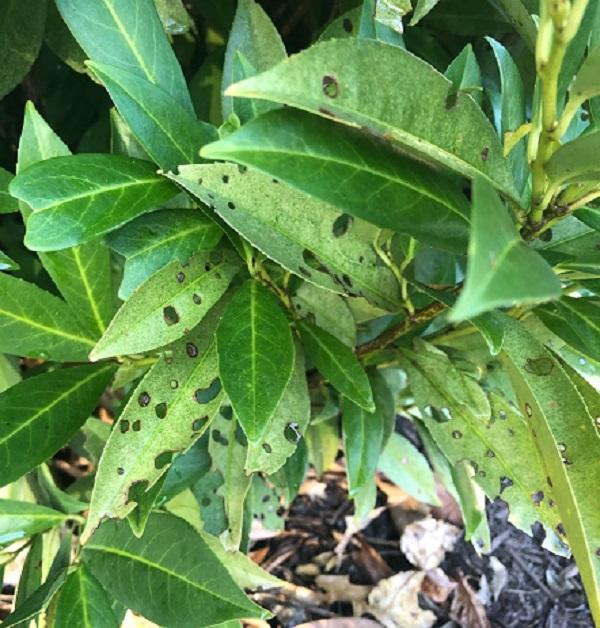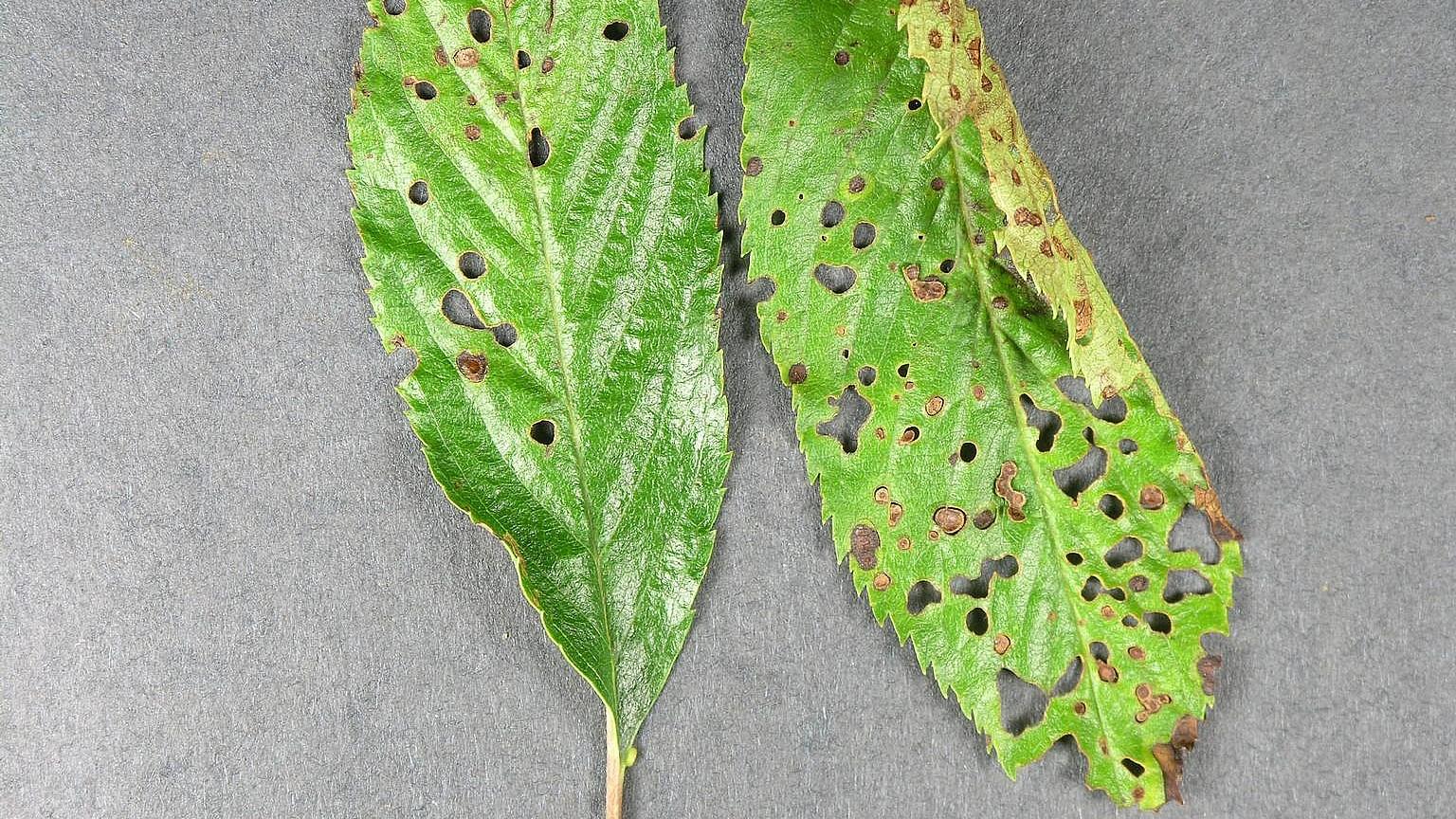About cherry shot hole disease
- Cherry shot-hole disease is a "catch-all" phrase referring to the symptom of tiny round holes (about ⅛” in diameter) in leaves of cherry trees and cherry laurel shrubs (Prunus spp.).
- The two pathogens that commonly produce these symptoms are bacterial leaf spot caused by the bacterium Xanthomonas pruni and cherry leaf spot caused by the fungus Blumeriella jaapii.
- Both diseases are favored by warm, wet spring weather.

Cherry leaf spot symptoms. Photo: David L. Clement, University of Maryland
Symptoms of cherry shot hole
- Foliar symptoms begin in the spring as brown or reddish-brown leaf spots. Later in the season, the infected leaf tissue drops out, leaving small “shot holes.”
- Infected cherry tree leaves will turn completely yellow and drop from the trees in mid-summer if the infection is severe. Defoliation can be dramatic in some years when disease pressure is high, but it is not lethal to the plant if the tree is otherwise healthy.
- On cherry laurel shrubs, the leaves with holes remain on the plant. New growth in the spring will hide the damaged leaves.
- These diseases will continue to infect leaves throughout the growing season if rainy weather persists.

Photo: Ask Extension
Management
- Remove older, heavily damaged, or poorly growing cherry trees. Plant resistant varieties such as Prunus 'First Lady' or Prunus 'Dream Catcher.'
- Try to adjust tree and shrub spacing and use proper pruning to provide better air circulation to promote faster leaf drying.
- Remove and dispose of fallen leaves in the fall to reduce overwintering pathogens.
- In most cases, trees and shrubs recover from these diseases and no treatment is necessary.
- On cherry laurel shrubs, prune out and discard symptomatic foliage.
- On high-value cherry trees or trees with a history of severe fungal leaf spot disease, the use of fungicides may help. But, fungicides will not work if the leaf spot is caused by the bacterium, Xanthomonas pruni. However, treatments will only provide preventative disease management or slow down the rate of disease development and will not cure already infected leaves.
- Fungicide applications would have to start as the new leaves are expanding and continue while rainy periods persist. A practical approach might be to apply two sprays, just as leaves are expanding and again when new leaves have reached full size. This approach will reduce the amount of disease and could give extended control in typical years. If you decide you want to manage this disease on cherry trees using a fungicide, contact a licensed arborist.
Additional resource
The Ohio State University Buckeye Yard and Garden Line | Late Season Ornamental Cherry Defoliation
Author: Dave Clement, Ph.D., Extension Specialist, Plant Pathology
Still have a question? Contact us at Ask Extension.
